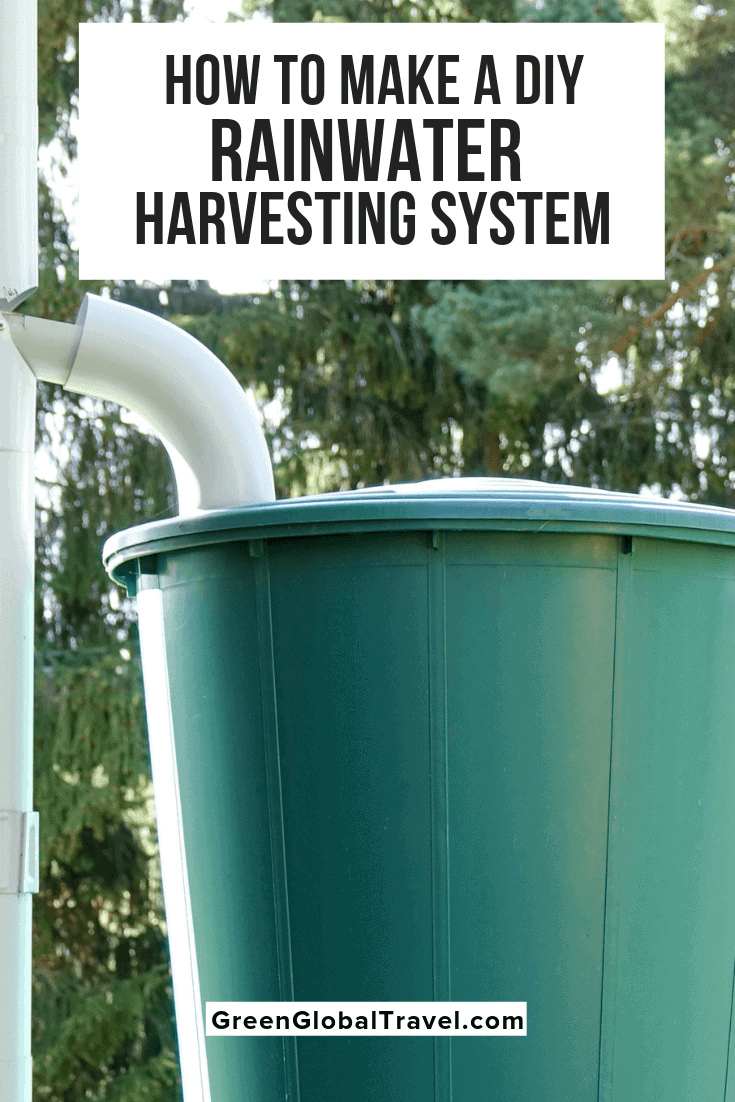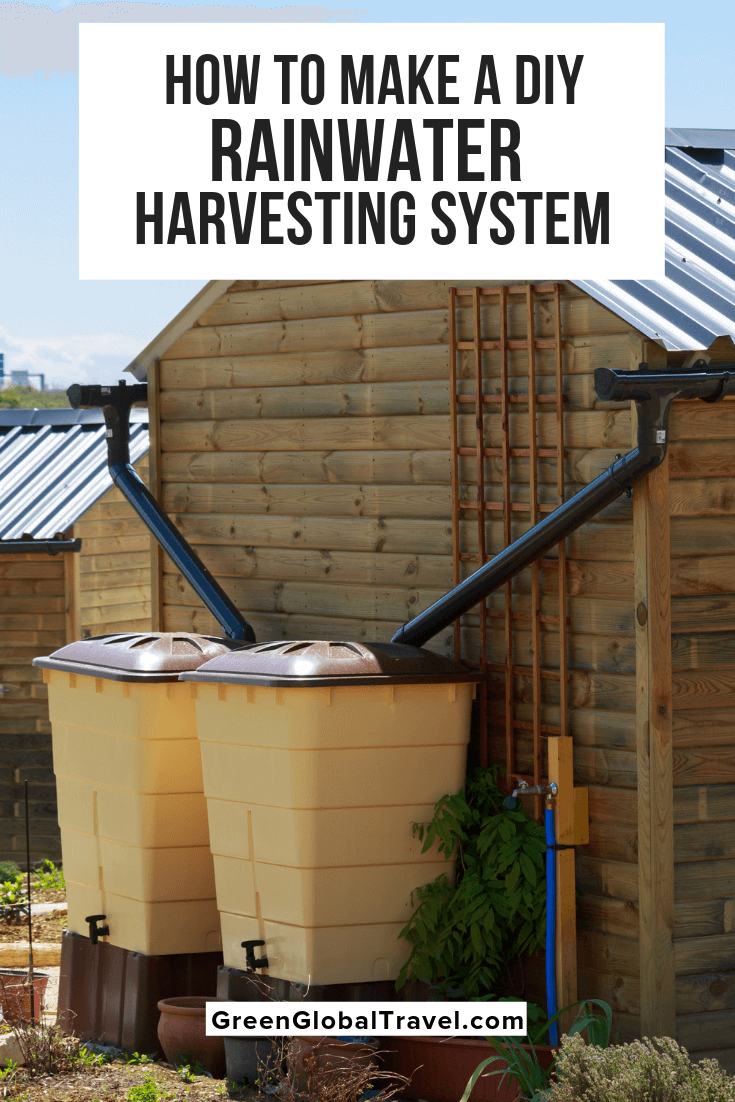[ad_1]
Water collection and storage is nothing new. Humans have been harvesting rainwater for centuries… millennia, actually.
In fact, many of the ancient archaeological sites that we love to visit—Machu Picchu, the aqueducts of Rome, the Basilica Cistern in Istanbul, the ponds and linear channels of Angkor Wat, the rice terraces of the Philippines—provide great models for rainwater harvesting systems.
Learning methods for harvesting rainwater could ultimately prove to be the key to future life on earth. Frighteningly, less than 1% of the world’s water can be used by humans for drinking, and the planet has been working with roughly the same amount of fresh water for millions of years.
But as the global population increases, so does the demand for water. Unfortunately, many of the natural water systems we’ve historically relied on for drinking water— aquifers, creeks, lakes, and rivers—are drying up from overuse, or are at risk of being too polluted to use safely.
We don’t even need to look beyond US borders to know that fresh water is a really big deal, no matter where you live. But water scarcity is a growing problem all around the world.
For eons, water evaporated into the atmosphere and fell back to earth in a natural filtering cycle. But with urbanized sewage/drainage systems, genetically modified food production, and industrial waste, municipalities must use a slurry of chemicals to make water potable again.
Luckily, Mother Nature supplies us with plenty of fresh water right at home. This handy guide will teach you what rainwater harvesting is, how it benefits the environment, various water catchment methods, and how to make a DIY rainwater harvesting system of your own.
READ MORE: How to Save Water: 15 Water Conservation Methods
TABLE OF CONTENTS
- What is Rainwater Harvesting?
- Advantages of Rainwater Harvesting
- How Water Harvesting Benefits the Environment
- Rainwater Harvesting Methods
- How to Make a Rainwater Tank
- Installing a Rainwater Filter
- Rainwater Harvesting System

What Is Rainwater Harvesting?
Rainwater harvesting is the simple act of collecting and storing rainwater when the getting is good so it can be used in times of drought.
With safe drinking water becoming increasingly scarce, rain harvesting systems (a.k.a. water catchment systems) are becoming commonplace again, as they were in ancient times.
Even people who don’t need drinking water often use rainwater collection tanks to water their gardens. This is particularly true in regions where droughts or dry seasons are common, and access to municipal water is limited, unreliable, or expensive.
There are many different methods for rainwater harvesting: Every rooftop, hard surface, or sloped landscape provides the potential to capture and store rain rather than merely let it drain away.
Since we have to have shelters and roads, that means rainwater systems can be used just about everywhere. Even in the Arizona desert, where the average annual rainfall is less than 10 inches, a typical suburban rooftop could collect thousands of gallons of water every year!
READ MORE: 60 Going Green Tips You Can Use Every Day
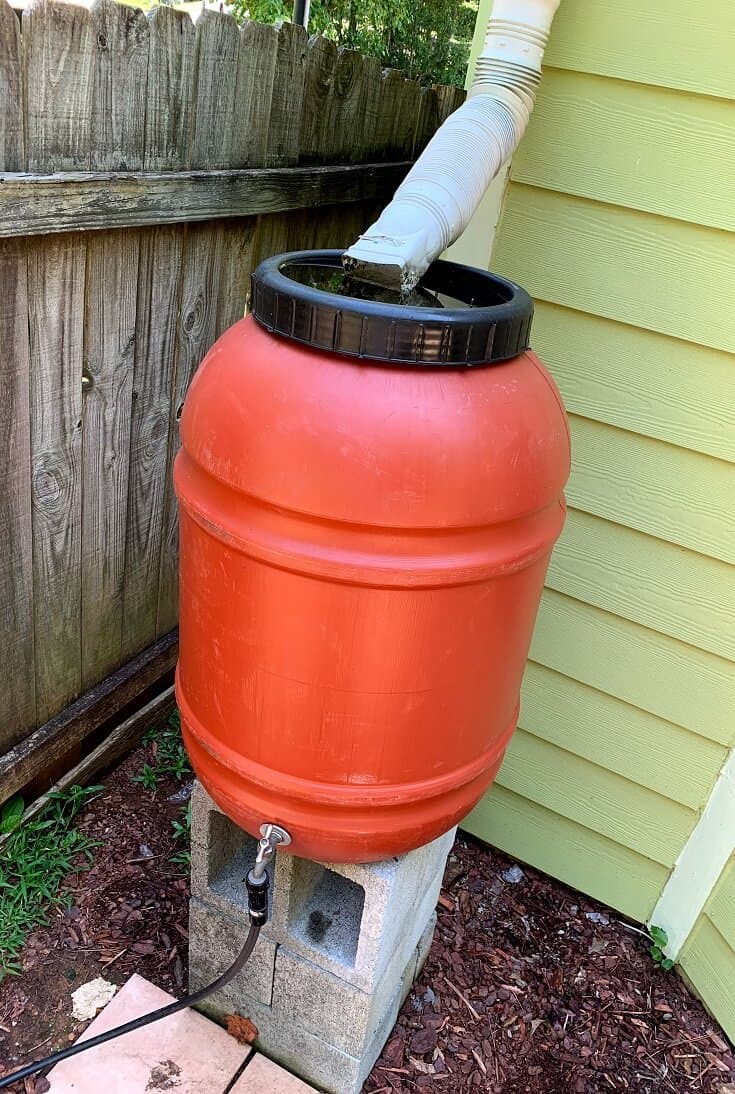
Advantages of Rainwater Harvesting
While collecting rainwater is often seen as an environmental act, there are quite a few advantages of rainwater harvesting on a personal level:
- Harvesting rainwater can reduce water bills significantly by supplying free water for irrigating gardens and lawns. This accounts for about 20% of the average American household’s water usage.
- A water harvesting system reduces flooding in the garden by catching and storing hundreds of gallons of water before allowing roof runoff to spill into the lawn. That water can be distributed later, as needed, rather than when it’s overabundant.
- Rain catchment systems give us access to water that has not been chemically treated, which is much better for growing organic food and various other things.
- A rain catchment system can be plumbed to act as a primary water supply for many household functions, such as for a washing machine or an outdoor sink.
- Rain catchment tanks additionally work well as a back-up water supply for emergency use.
READ MORE: What is Permaculture Gardening?
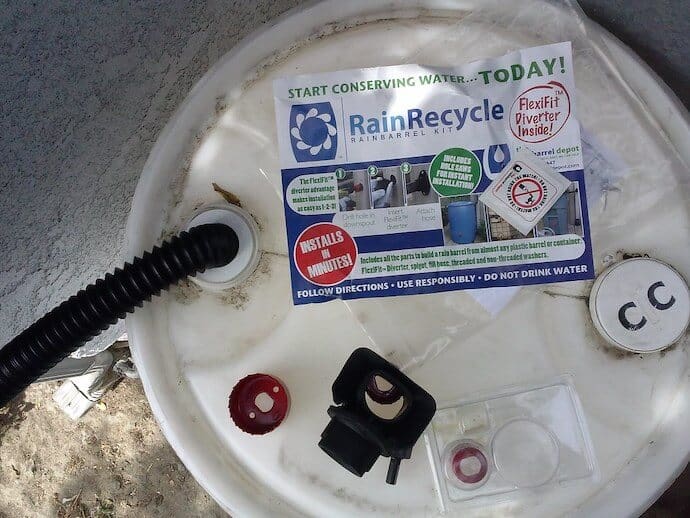
How Water Harvesting Benefits the Environment
Rainwater collection systems can also do a lot to help the ecosystem and community in which we live. With a system of our own, we can start making a local and global difference right at home. Here are five examples of how harvesting water benefits the environment:
- Rain harvesting reduces stormwater runoff, which means less of our fresh water is going into drainage/sewage treatment systems. That means less energy is needed to clean the water, and less water is lost or contaminated in transit during the urbanized water cycle.
- By diverting stormwater with rain collection systems, we also put less stress on (and reduce pollution in) local creeks, streams, and rivers. As we’ve developed neighborhoods and shopping centers, we’ve dramatically altered the way nature absorbs rainfall. Nowadays, hard surface runoff creates “natural” disasters, including flooding cities.
- Using collected rain for household needs, such as watering plants, allows our aquifers time to replenish themselves. Plus, having water catchment systems through earthworks helps the water permeate into the ground rather than running into municipal drainage systems.
- Rain water harvesting also reduces our reliance on municipal water. Municipal water has to be treated with chemicals and pumped to our homes, no doubt using fossil fuels in the process. The less municipal water we use, the less energy is wasted.
- Earthwork rain catchments such as dams and ponds can also provide valuable wildlife habitat, drinking water, and bathing water. Bees, butterflies, birds, fish, and every other animal on the planet need water to live. Clean, collected rainwater is even better!
READ MORE: The Real Erin Brockovich Fights Water Pollution
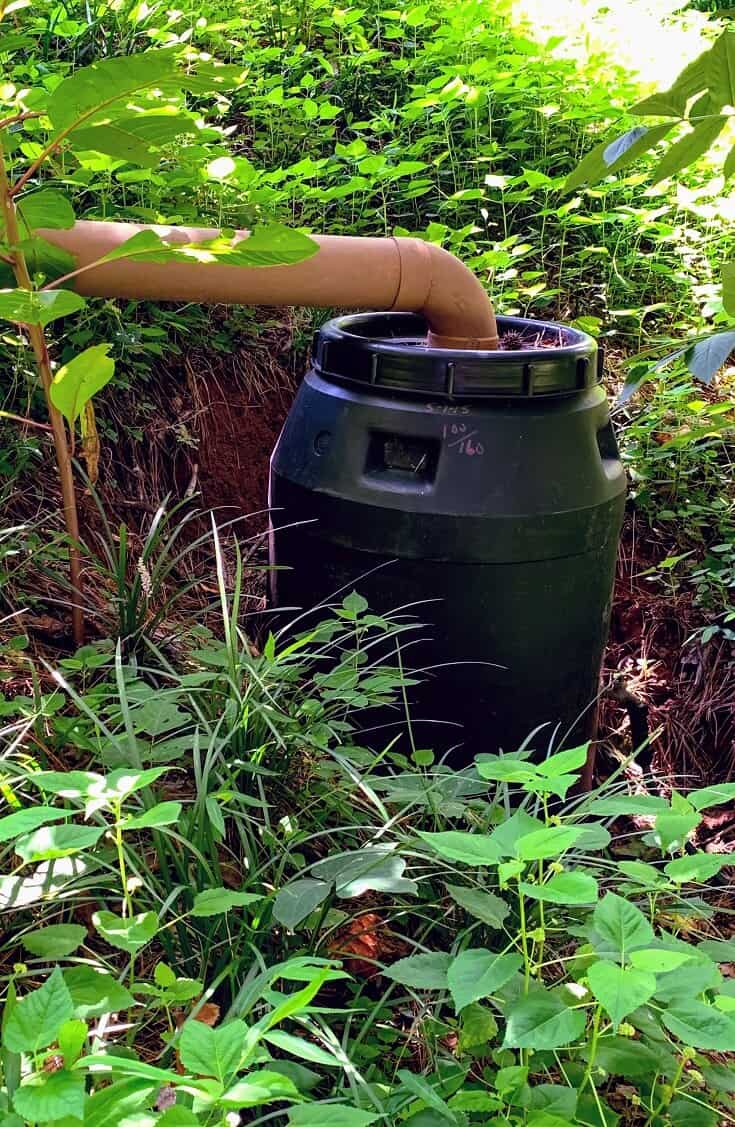
Rainwater Harvesting Methods
There are several different methods of harvesting rainwater. Some involve tanks or cisterns that hold the water for easy access, while others hold the water until it soaks into the earth.
Some models for the home are designed to be small-scale, holding as little as one 40- to 55-gallon drum at a time. More involved rain catchment systems, such as you might find on a sustainable farm, can hold thousands or even millions of gallons of water.
Rooftop water catchment is the most common DIY rainwater harvesting method for urban and suburban areas. With this approach, the rain that falls onto the roof during a storm moves through gutters and into downspouts that fill rainwater collection tanks.
These tanks usually provide water for garden or lawn irrigation, but more advanced systems can also help with supplying water needs inside the home. Similar systems can be attached to tube wells rather rain collection tanks in order to refill aquifers where groundwater has become low.
Other suburban models for rainwater collection rely on hard surface runoff, such as the current moving down the driveway or street. In this case, water is directed into catchments, such as swales or rainwater gardens, that spread it and hold it until the earth is better able to absorb it.
This also eliminates the need to irrigate with municipal water. Rather than draining all that valuable rain away, water catchments keep some of it for the plants to enjoy. To help with replenishing groundwater, some people lead hard surface runoff to a recharge pit.
With acreage comes even more potential for rainwater harvesting. Earthworks can take advantage of natural drainage paths by disrupting them, spreading the water over sloped landscapes with swales that are attached to dams that hold water in bulk.
Ponds and lakes (the water behind dams) can support biodiverse ecosystems in which plants and animals thrive because they have constant access to water. With these kinds of water catchment, aquifers quickly regenerate and the water table stays high.
READ MORE: The Ultimate DIY Aquaponics Beginner’s Guide
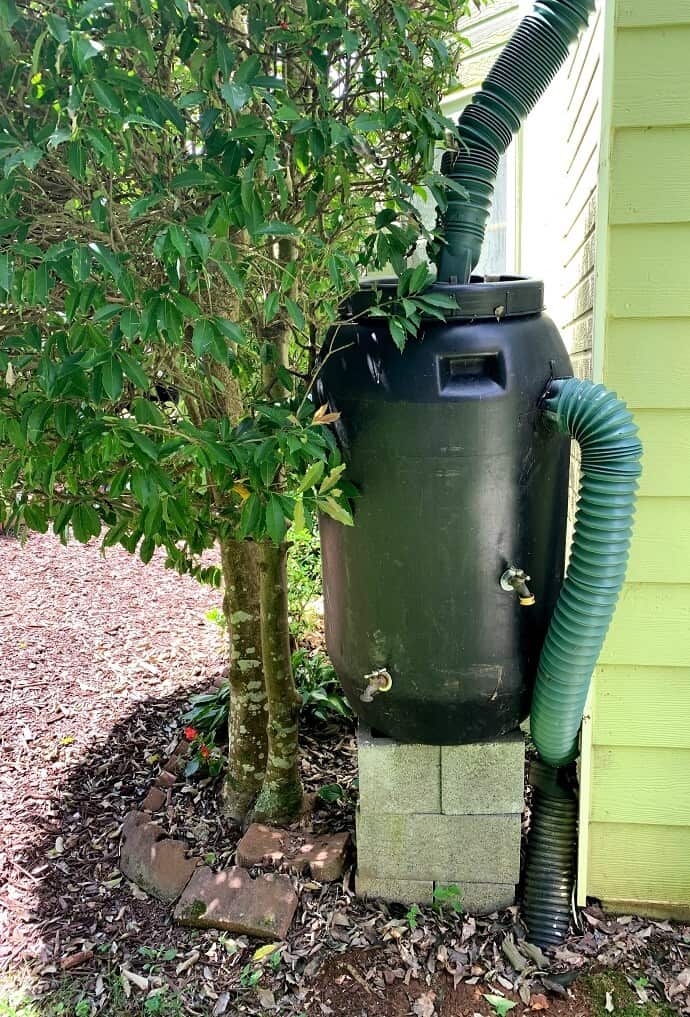
How to Make a Rainwater Tank
The common urban/suburban water catchment system collects rainwater from the roof and stores it in an attached tank, either above or below the ground.
One inch of rain on a 2000 square foot roof supplies over 1200 gallons of water, or around 13 bathtubs’ worth The average rainfall for the contiguous United States is over 30 inches a year, which is more than 36,000 gallons per roof! All of that water has to be held somewhere.
A rooftop rain harvesting system generally involves a tank ranging anywhere from 40 to hundreds of gallons. Sometimes these tanks are built underground our of concrete, which requires serious excavation and installation cost. On the positive side, they can be very large.
Above-ground metal tanks are less expensive and difficult to install, but they do tend to rust over time. Bladder tanks, like gigantic bags, are commonly used in tight spots, such as under a deck.
But plastic/polyethylene rainwater tanks are by far the most common. Unless the water is being used for drinking, the likelihood is that any of these options is safe.
Because they’re the most cost-efficient, long-lasting, and repurposed, one of the most commonly used rainwater catchment tanks is a 55-gallon barrel. Here’s a great video on how to make a rainwater tank using food grade barrels, which are widely available and inexpensive. The rain barrels pictured in this post used to hold roasted red peppers and olives.
These are often connected in order to provide more rainwater storage space. Or they can be installed individually beneath each downspout to provide access to water in several locations. Similar, larger capacity systems can be built with repurposed IBC totes as well.
There are only a few steps to install a rain harvesting barrel”
- A hose or pipe, the same size or larger than the gutter outlet, should connect the gutter to the top of the barrel. This involves cutting a small hole in the top of the barrel and making a rainwater filter for debris (which we’ll talk about in the next section).
- The barrel should be set on a platform, lifting it up off the ground. We recommend using concrete blocks, stacking two to three pairs on top of each other.
- A spigot should be connected to the side near the bottom of the barrel, so that all of the water inside can be accessed.
- An overflow outlet, the same size as or slightly larger than the gutter outlet, should be put on the side near the top of the barrel. This outlet can involve a hose that leads the excess water to somewhere like a rain garden or recharge pit.
READ MORE: Permaculture Gardening Guide (12 Tips for a Productive Garden)
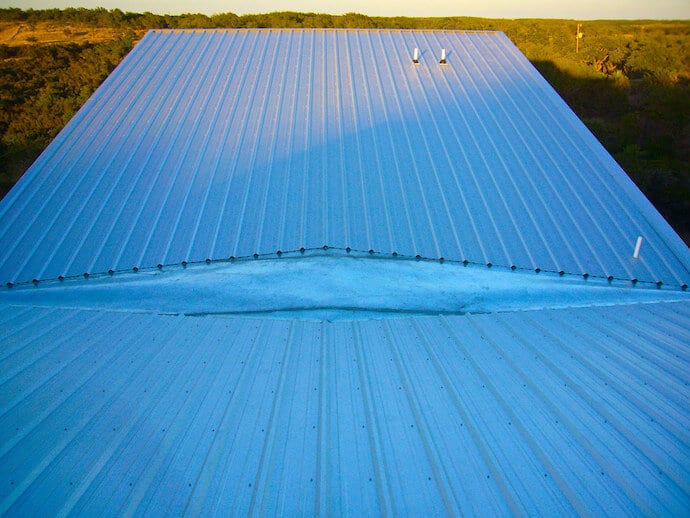
Installing a Rainwater Filter
Depending on the degree to which you hope to collect rainwater, there are different methods for rainwater harvesting. Similarly, the way in which we want to use the water– whether it be for irrigation, cleaning, or drinking– will determine the degree to which we filter the water.
For simple outdoor watering use, a rainwater filter made from everyday plumbing parts and around-the-house types of materials will suffice for collecting debris. A four-inch rubber boot or even an old plant pot can be plumbed to sit comfortably atop a rain barrel, with the gutter flow leading to it.
Inside the boot or pot, you can fit a piece of recycled hosiery or a paint sprayer filter to keep out any large debris that might be washed off the roof, such as leaves, twigs, or bugs. As long as the filter is cleaned regularly, collected rainwater will flow easily without it getting clogged up.
However, if drinking the water is the ultimately goal, then some additional filtering is necessary. Though rainwater is very clean, having gone through the natural water cycle and debris filter, it does pick up unsavory stuff on the route from roof to tank.
Making water potable for drinking requires an extra purification system. For emergency situations, it’s good to have a basic water purifier such as a camper would use. Or you can build a simple one with repurposed buckets. For a household water source, it’s better to bring in professionals.
READ MORE: 15 Ways to Reduce Waste & Move Towards Waste-Free Living

Rainwater Harvesting System
Any rooftop rainwater harvesting project has the same basic components: a roof to catch, guttering to collect, hoses to distribute, filters to clean, storage tanks to hold, and outlets to access rainwater.
It’s what happens beyond those outlets that determines the complexity of the rainwater harvesting system. Regardless of how complex we’d like to get with it, most of us have the capacity to harvest some rainwater.
A barrel-style rainwater collection system may be rudimentary, but the water would be perfectly fine for our lawn and garden use. If further purified a little at time by boiling, it can even become potable in a pinch. For a total cost of $50 to $60, this water-saving wonder can fulfill a lot of needs.
More complex rainwater harvesting systems– including underground cisterns, pumps, and purification– are completely possible, but require professionals to install and permits to use them.
But for those striving to go green, rainwater harvesting merits serious consideration. Collecting our own water makes a lot of sense, both ecologically and economically. It requires no chemicals to remove contaminants, because it isn’t laced with industrial dumping or agricultural runoff.
Instead of allowing rain to be a problem and fresh water to be scarce, we can catch enough water to use for many household needs. That’s empowerment, self-sufficiency, and truly sustainable living! –Jonathon Engels, main photo by fotos.rotas licensed under CC BY-NC-ND 2.0
[ad_2]

